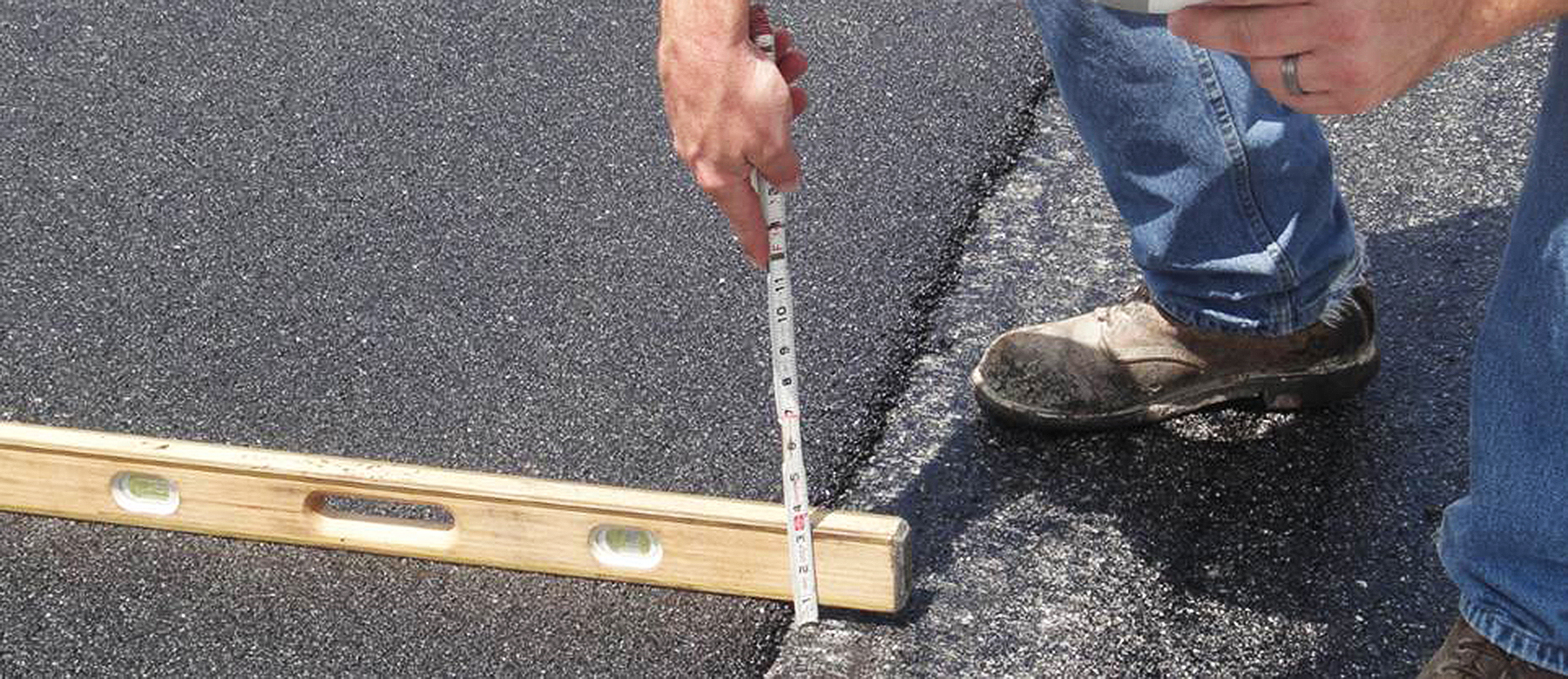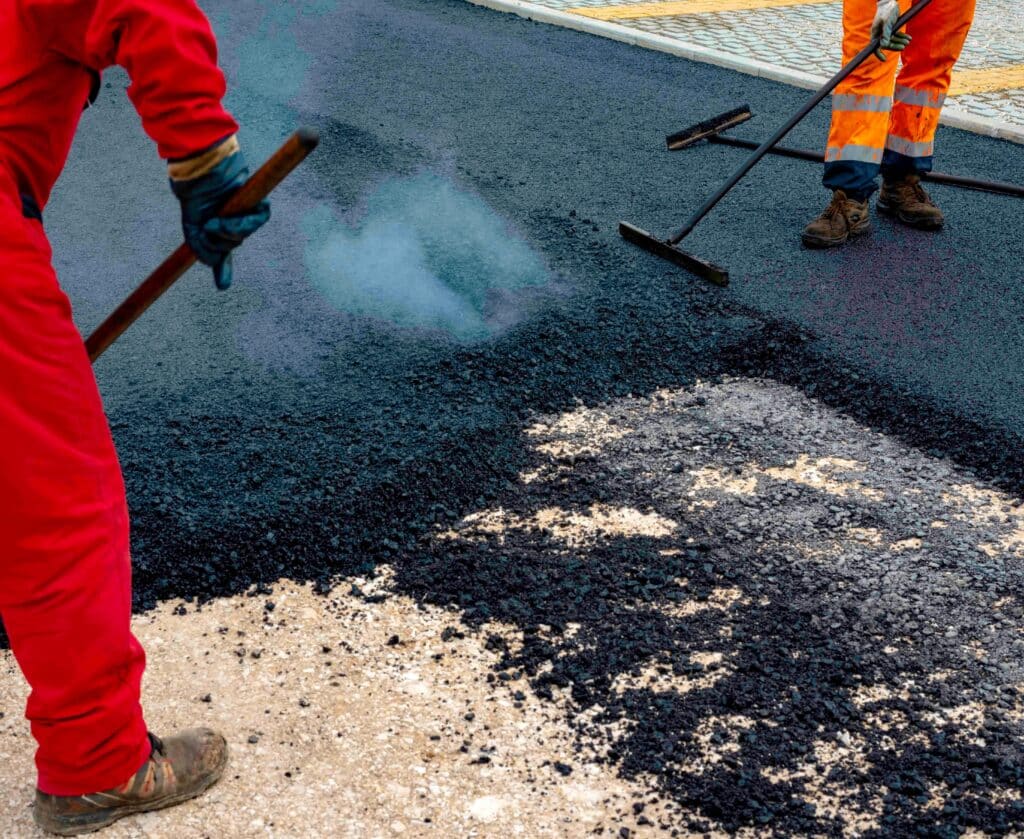Change Your Building's Landscape with Hot Mix Asphalt Paving Quality
Change Your Building's Landscape with Hot Mix Asphalt Paving Quality
Blog Article
Unlocking the Secrets of Warm Mix Asphalt Innovation
Checking out the midsts of warm mix asphalt technology discovers a globe where careful procedures and specific formulas converge to form our roadways and framework. The combination of accumulations, binders, and fillers isn't simply a building and construction job yet a strategic orchestration of durability and efficiency. As we peer right into the intricate dance of elements, a tapestry of resilience and sustainability unravels. But what lies beneath this surface of asphaltic proficiency, and what secrets wait to be unveiled in the realm of paving technologies?
Importance of Hot Mix Asphalt
Hot Mix Asphalt plays a crucial role in modern infrastructure growth due to its sturdiness and cost-effectiveness. As the most commonly used paving material for roads, freeways, and vehicle parking whole lots, Warm Mix Asphalt provides an array of benefits that add to its importance in construction tasks.
The resilience of Hot Mix Asphalt comes from its make-up, which consists of aggregates, binder, and filler products that are thoroughly selected and blended to fulfill specific performance requirements. This exact mix leads to a strong and adaptable pavement that can endure frequent usage without significant deterioration. Hot Mix Asphalt is 100% recyclable, more enhancing its sustainability and environmental benefits. Overall, the significance of Warm Mix Asphalt in facilities advancement can not be understated, as it continues to be a keystone of contemporary building and construction methods.
Parts of Asphalt Mixes
The structure of asphalt mixes is composed of meticulously selected aggregates, binder, and filler products that are essential for accomplishing certain efficiency needs. Accumulations are the main part of asphalt mixes, giving stamina and security. The binder, typically bitumen or asphalt concrete, holds the accumulations together and offers versatility and toughness to the mix.
The mix and percentage of these elements play a significant function in establishing the high quality and efficiency of the asphalt mix. Designers very carefully develop the mix to satisfy particular demands, considering elements like web traffic quantity, climate conditions, and pavement lifespan. Proper choice and balancing of aggregates, binder, and fillers are necessary for developing long lasting, lasting asphalt pavements.
Combining and Manufacturing Strategies

When the aggregates are selected, the binder, commonly asphalt concrete, is contributed to bind the materials with each other. The binder's top quality and quantity dramatically affect the mix's versatility, resistance, and toughness to ecological aspects. In addition, fillers like hydrated lime or Portland cement may be integrated to boost particular features of the asphalt mix, such as its workability or wetness resistance.
During production, the accumulations and binder are heated, generally between you can try these out 250-325 ° F(121-163 ° C ), to help with mixing and make sure appropriate finishing of the linked here accumulations. The mixing procedure has to be extensive to achieve a homogeneous blend that promotes the preferred efficiency characteristics of the asphalt. Numerous methods, such as batch mixing or drum mixing, are used to accomplish top quality and regular asphalt mixes for building tasks.
Aspects Affecting Asphalt Performance
Aspects affecting asphalt performance include an array of variables that affect the longevity, longevity, and general top quality of asphalt pavements. One crucial aspect is the top quality of materials used in the asphalt mix.

Environmental problems likewise affect asphalt performance. Temperature variants, moisture seepage, and website traffic lots can all impact the architectural integrity of the sidewalk. Design considerations, such as sidewalk thickness and drainage, are necessary in making certain the long-lasting efficiency of the asphalt pavement. By carefully taking into consideration these specialists, variables and engineers can enhance asphalt performance and improve the solution life of sidewalks.
Lasting Practices in Asphalt Modern Technology

WMA permits for the production and positioning of asphalt blends at lower temperature levels contrasted to conventional hot-mix asphalt, resulting in lowered energy usage and greenhouse gas exhausts. The use of porous asphalt blends can help reduce stormwater drainage issues by enabling water to penetrate via the pavement and into the ground, advertising all-natural water filtration and charge procedures.
Final Thought
Finally, warm mix asphalt technology plays an important duty in modern infrastructure advancement due to its toughness and cost-effectiveness. By carefully balancing components, employing proper mixing techniques, and considering various factors, designers can develop high-quality asphalt blends that hold up against hefty traffic loads and harsh weather. Welcoming lasting methods, such as using warm-mix modern technologies and recycled products, additionally improves the environmental kindness of asphalt modern technology.
Blending and production techniques in warm mix asphalt innovation involve the precise mix and processing of aggregates, binder, and fillers to develop a long lasting and high-performance asphalt mix.Factors affecting asphalt performance incorporate a variety of variables that impact the durability, long life, and overall top quality of asphalt sidewalks. Sustainable methods in asphalt technology incorporate different campaigns intended at reducing the ecological impact of asphalt manufacturing and paving processes. By integrating reclaimed asphalt sidewalk (RAP) and recycled asphalt shingles (RAS) right into new asphalt mixes, the sector can substantially reduce the usage of raw materials and energy, while additionally decreasing land fill waste.
WMA allows for the manufacturing and positioning of asphalt mixes at reduced temperatures contrasted to traditional hot-mix asphalt, resulting in minimized power consumption and greenhouse gas exhausts.
Report this page